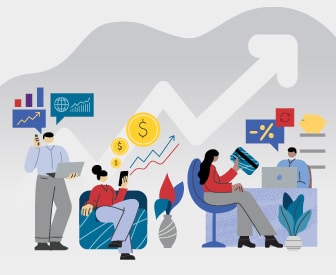The national auto loan delinquency rate (the rate of borrowers 60 or more days past due) reached its lowest level since TransUnion began tracking the data in 1999. Auto loan delinquency rates in Q1 2012 dropped to 0.36%, down nearly 27% from Q1 2011 (0.49%). On a quarterly basis, auto loan delinquencies declined almost 22% from 0.46% in Q4 2011. This information is reported by TransUnion and is part of its ongoing series of quarterly analyses of credit-active U.S. consumers and how they are managing credit related to mortgages, credit cards and auto loans.
“Auto loan delinquencies continue to perform exceptionally. This can be attributed primarily to growing demand for both new and used vehicles and higher used vehicle values, which equates to an increase in equity for consumers,” said Peter Turek, automotive vice president in TransUnion’s financial services business unit. “We are seeing increases in both lending and leasing across the board, along with a higher number of loans originated in the non-prime risk segments.”
Between Q4 2011 and Q1 2012, 43 states experienced declines in their auto delinquency rates. On a more granular level, only 34% of metropolitan areas saw increases in their auto delinquency rates in Q1 2012. This is down from the prior period where 44% of the MSAs experienced increases.
“We anticipate national auto loan delinquency rates to remain relatively low for the remainder of the year, rising and decreasing with traditional seasonal patterns,” added Turek. “However, a slight increase from this record-low level would not be surprising and should not be construed as a negative event, as lenders continue to originate more loans to consumers across all credit risk levels.”

Instant Messaging. Instant Impact.
Connect with your customers and provide lightning-fast support as effortlessly as texting friends. Two-way SMS text messaging is no longer optional.

Navigating Credit Card Issuing in an Uncertain Economic Environment
Build a modern credit card strategy that balances profitability and risk, adopts the latest technology and delivers the customization that cardholders demand.
Read More about Navigating Credit Card Issuing in an Uncertain Economic Environment
| Q1 2011 | Q1 2012 | % Change | |
|---|---|---|---|
| Auto Debt Per Borrower (quarter over quarter) |
$13,045 | $13,272 | 5.45% |
| Auto Debt Per Borrower (year over year) |
$12,585 | $13,272 | 1.74% |
| Delinquency Rates | 0.46% | 0.36% | –21.74% |
| Top 3 Year-Over-Year Increases | Q1 2011 | Q1 2012 | % Change |
|---|---|---|---|
| Washington | $13,026 | $14,236 | 9.28% |
| Oregon | $11,853 | $12,890 | 8.75% |
| Alabama | $13,026 | $14,808 | 8.61% |
| Highest Bank Auto Debt Per Borrower | Q1 2012 |
|---|---|
| Wyoming | $14,961 |
| Texas | $14,935 |
| Alabama | $14,808 |
| Lowest Bank Auto Debt Per Borrower | Q1 2012 |
|---|---|
| Nebraska | $11,406 |
| Ohio | $11,780 |
| Maine | $11,936 |
No states experienced year-over-year declines in average amounts borrowed for auto loans.
Information for TransUnion’s Trend Data is pulled from the firm’s database of 27 million anonymous consumer credit files. This represents approximately 10% of all credit-active U.S. consumers, giving financial marketers about as accurate a view of the lending landscape as they’ll see anywhere.







